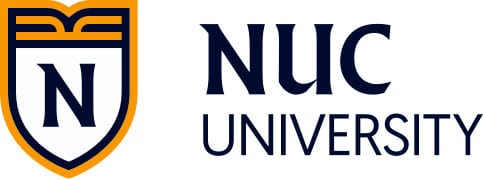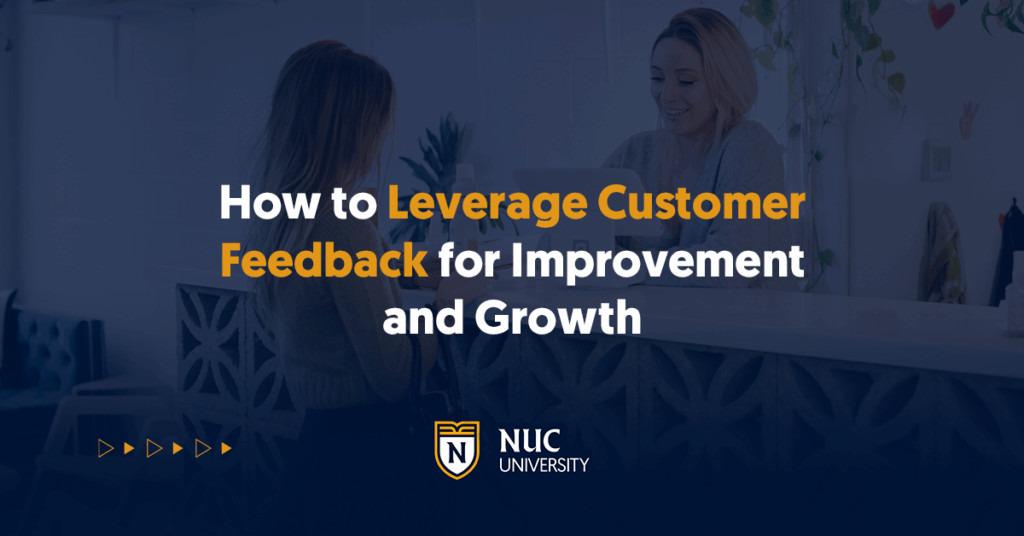Listening to our customers, analyzing their input, and acting on it allows us to position ourselves to innovate and differentiate in a competitive market. Each NUC student who shares feedback allows us to grow, learn, and provide a better education. Let’s take full advantage of it.
Picture this: you walk into your go-to restaurant, and there it is—your favorite dish, newly added thanks to customer suggestions. That sense of being heard and valued is what NUC University students feel when we truly take their feedback into account. In the highly competitive world of education, listening and responding to what students and potential students want sets us apart.
Customer feedback is the best indicator of product quality. Each interaction offers a chance to learn and grow. When we pay attention to their comments, we discover new ways to offer a better service.
Listening to Students to Improve and Build Trust
One of the essential tools to assess the customer experience (CX) and determine how likely people are to recommend us is the Net Promoter Score (NPS). Survey participants rate us on a scale from 0 (not likely at all) to 10 (extremely likely), and their responses fall into three groups that are used to calculate the final score.
Customers who give a score of 9 or 10 are considered “Promoters” because they actively recommend the service or product. Those who score 7 or 8 are “Passives”—generally satisfied but not enthusiastic. “Detractors,” scoring between 0 and 6, are unhappy clients who are less likely to come back and might even influence others negatively.
True trust and loyalty come from consistent, positive experiences—not advertising or promotions. Every comment, whether good or bad, is a chance to reinforce the bond with our students and prove our dedication.
The companies that excel in customer service aren’t those that never make mistakes, but those that listen, correct, and improve quickly. What often separates a lost customer from a brand promoter is how we handle their requests.
From Feedback to Action: Opportunities for Growth
Sometimes, a single comment can reveal major opportunities: Suggestions like “This would be perfect if…” or “A little improvement here would go a long way” can turn a one-time client into a loyal one.
Feedback collection is only the beginning—what counts is how we act on it. Some effective strategies include:
- Surveys and questionnaires: Directly asking our students about their experience gives us measurable insights.
- Social media monitoring: Many students voice their opinions on social media; paying attention to these can provide valuable clues.
- Communication channels: Having various channels (phone, email, live chat) makes it easier for them to express doubts, questions, and opinions.
- Focus groups: Engaging in discussions with small groups of students can reveal valuable details about their expectations and educational needs.
Getting Closer to Customers Drives Continuous Improvement
If you’ve ever thought that you lack the ability to keep innovating, or that the best ideas only come from boardrooms, step out of your comfort zone. Ask the customers, talk to NUC students, and find out what we can do to improve. You don’t have to look far back to find success stories born from customer feedback.
- Apple: Listens to customers and adjusts its products. For example, reintroduced the MagSafe ports on MacBooks after receiving negative feedback about the USB-C ports.
- Netflix: Tailors its recommendation algorithm and content catalog based on user habits and preferences—no need to ask them directly.
- Starbucks: My Starbucks Idea platform allowed users to suggest and vote on ideas, like bottled cold brew coffee and reward program improvements.
- LEGO: LEGO Ideas lets users submit set designs, and the top-voted ones are commercially produced. This has led to iconic launches like the Friends set or NASA’s Apollo Saturn V.
- Nike: Implements product improvements based on athletes’ and customers’ feedback, such as the lightweight, breathable Flyknit shoes.
Forbes’ 2024 “Customer Experience All Stars” highlights other cases where the most valued companies according to users succeeded not by being the most innovative, but by listening to their customers and delivering the services they asked for.
Active listening helps us identify opportunities that might otherwise go unnoticed. Those who turn feedback into strategies for continuous improvement are the ones succeeding. Every comment is a reminder: there’s always room to grow.

Sources:
What is NPS? Your ultimate guide to Net Promoter Score
https://www.qualtrics.com/en-gb/experience-management/customer/net-promoter-score/?rid=cookie&prevsite=en&newsite=en-gb&geo=ES&geomatch=
Forbes, Customer Experience All Star 2024
https://www.forbes.com/consent/ketch/?toURL=https://www.forbes.com/lists/customer-experience-all-stars/
Forbes, The Power of customer feedback
https://www.forbes.com/councils/forbesbusinesscouncil/2023/06/30/the-power-of-customer-feedback/
Nike, flyknit
https://www.nike.com/en/flyknit
Netflix’s Algorithm: How Does Netflix Use AI to Personalize Recommendations
https://litslink.com/blog/all-about-netflix-artificial-intelligence-the-truth-behind-personalized-content




